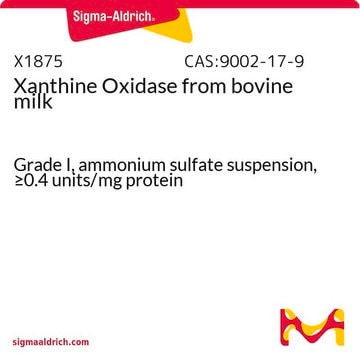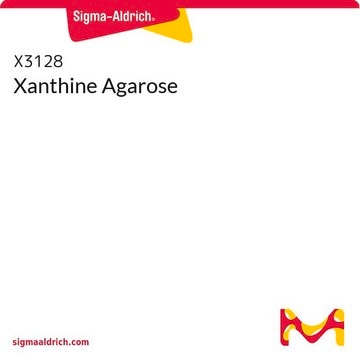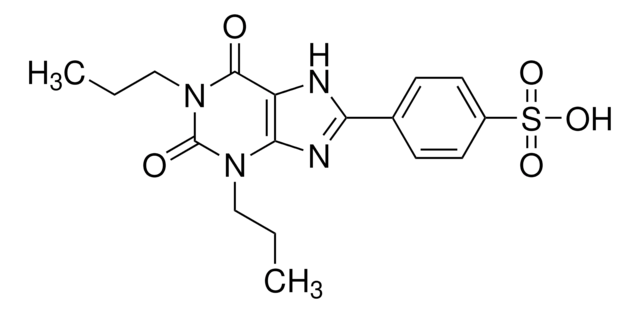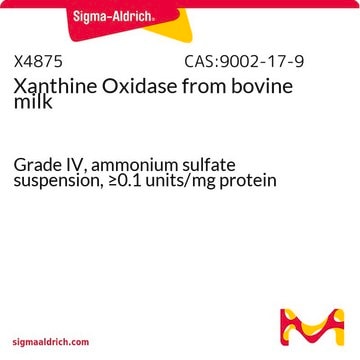X4002
Xanthine
BioUltra, ≥99%
Synonym(s):
2,6-Dihydroxypurine
About This Item
Recommended Products
biological source
synthetic (organic)
product line
BioUltra
assay
≥99%
form
powder
impurities
≤0.0005% Phosphorus (P)
≤0.1% Insoluble matter
ign. residue
≤0.1%
solubility
1 M NaOH: 0.1 M, clear, colorless to light yellow
anion traces
sulfate (SO42-): <0.05%
cation traces
Al: ≤0.0005%
Ca: ≤0.0005%
Cu: ≤0.0005%
Fe: ≤0.0005%
K: ≤0.005%
Mg: ≤0.0005%
NH4+: ≤0.05%
Na: ≤0.005%
Pb: ≤0.001%
Zn: ≤0.0005%
SMILES string
O=C1NC(=O)c2nc[nH]c2N1
InChI
1S/C5H4N4O2/c10-4-2-3(7-1-6-2)8-5(11)9-4/h1H,(H3,6,7,8,9,10,11)
InChI key
LRFVTYWOQMYALW-UHFFFAOYSA-N
Looking for similar products? Visit Product Comparison Guide
Related Categories
General description
- Guanine deamination by guanine deaminase
- Hypoxanthine conversion by xanthine oxidoreductase
Application
- yeast culture
- human cell line culture
- recombinant viruses cloned as bacterial artificial chromosomes in Escherichia coli
Biochem/physiol Actions
Features and Benefits
- Tested for trace metal content (fuller details in Properties section and on Specification Sheet)
- Tested for trace sulfate content (fuller details in Properties section and on Specification Sheet)
Storage Class
11 - Combustible Solids
wgk_germany
WGK 3
ppe
dust mask type N95 (US), Eyeshields, Faceshields, Gloves
Certificates of Analysis (COA)
Search for Certificates of Analysis (COA) by entering the products Lot/Batch Number. Lot and Batch Numbers can be found on a product’s label following the words ‘Lot’ or ‘Batch’.
Already Own This Product?
Find documentation for the products that you have recently purchased in the Document Library.
Customers Also Viewed
Our team of scientists has experience in all areas of research including Life Science, Material Science, Chemical Synthesis, Chromatography, Analytical and many others.
Contact Technical Service












